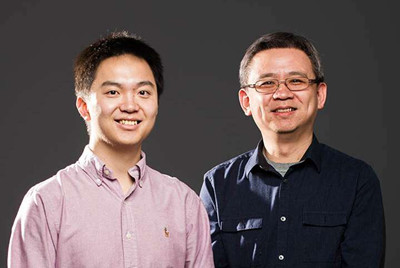
Researchers at the National Renewable Energy Laboratory (NREL), working in collaboration with their counterparts in the Republic of Korea, have validated the potential of using a combination of perovskite and silicon to create solar cells that are more than 30% efficient.
Their initial solar cell achieved a certified efficiency of 26.2%.
"This study provides a new general approach with clear technological breakthroughs and scientific insights for further advancement of perovskite technologies," said Kai Zhu, a corresponding author of a newly published paper in the journal Science that outlines the work. Zhu is a senior scientist in the Chemistry and Nanoscience Center at NREL.
By itself, the perovskite component recorded an efficiency of 20.7%, the highest reported in the literature for wide-bandgap perovskites.
The scientists also noted accelerated testing showed the perovskite cell exhibited "excellent long-term stability" by retaining more than 80 percent of its initial efficiency after 1,000 hours of continuous illumination.
The term perovskite refers to a crystalline structure. Perovskite solar cells are made through a combination of elements and have emerged as the fastest-advancing solar technology.
The research appears in a newly published paper in the journal Science, "Efficient, stable silicon tandem cells enabled by anion-engineered wide-bandgap perovskites." In addition to Zhu, the paper was co-authored by Bryon Larson, Sean Dunfield, Chuanxiao Xiao, Jinhui Tong, Fei Zhang, and Joseph Berry, all from NREL; and a group of scientists led by Byungha Shin (Korea Advanced Institute of Science and Technology), Dong Hoe Kim (Sejong University), and Jin Young Kim (Seoul National University), from the Republic of Korea.
Zhu, Dong Hoe Kim, and Shin conceived the research project, which was funded in part by the Department of Energy's Solar Energy Technologies Office. The researchers said the tandem solar cell could surpass 30% efficiency once additional work is done to perfect the silicon layer.
The tandem solar device is made of a top perovskite cell and a bottom silicon cell. Both top and bottom take in separate segments of the solar spectrum through a bandgap. The wider the bandgap of the top perovskite cell, the more sunlight the bottom silicon device can absorb. The bandgap for silicon is fixed at 1.1 electron-volts (eV), but the bandgap for perovskites can be chemically adjusted, or "tuned." The ideal is about 1.7 eV, but to accomplish that requires replacing iodine with bromine. Too much bromine, however, can make the perovskite unstable.
Researchers in the field have been exploring the use of the so-called two-dimensional (2-D) phase, in which sheets of lead halide octahedra separated by long-chain molecules are added to the perovskite for use as a passivation agent to reduce chemical reactivity. The use of passivation layers has shown to be effective in improving the stability and performance of perovskites.
In engineering the passivation layer, the scientists at NREL and their colleagues overseas focused on engineering the negatively charged ions—called anions—of the 2-D additives, instead of the positively charged ions (cations) others have focused on. By introducing thiocyanate and mixing it with iodine, the researchers were able to improve the structure and optoelectronic properties of the wide-bandgap (1.68 eV) perovskite and device performance. The use of thiocyanate enabled the researchers to boost the current density of the device, while the iodine improved the voltage.
Working with colleagues at the University of Toronto, Xiao and Zhu developed a perovskite-silicon tandem with certified 25.7% efficiency and a negligible drop in performance after 400 hours. The findings were reported earlier this month in Science.
Parallel research at NREL focused on a highly stable perovskite-silicon tandem. Also reported earlier this month in Science, the device was made by using a combination of iodine, bromine, and chlorine. The certified efficiency of the stable tandem device was 25.8%.

